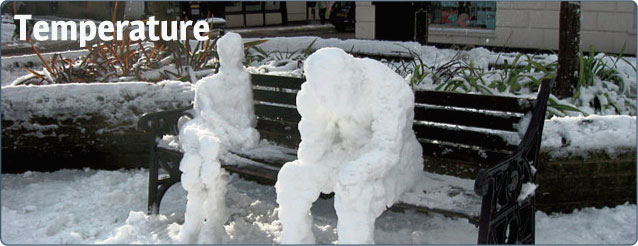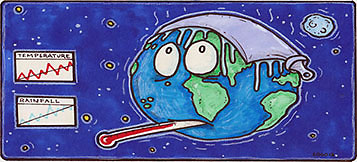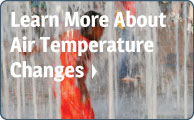
Photo Credit: Chris Reynolds
Climate Science: Warming
Turn Down That Thermostat!
When you are going to talk about global, regional and local warming, it would be a good idea to have a thermometer somewhere at hand. Then you can take temperatures to back up your case. (In the science world, we call this data collection.)
Fortunately, for decades scientists have not only had thermometers at their disposal, but much more sophisticated equipment to keep a running data stream of temperatures of the Earth’s air and water.
The Facts
In a nutshell, here are some quick observations that have been made and verified about the planet’s air and ocean temperatures globally, in the U.S. Northeast, and in Rhode Island:
Air Temperature
- Global - Global mean temperature has increased 1.33°F over the last 100 years.
- U.S. Northeast - Since 1900 the annual mean temperature has risen 1.5°F.
- Rhode Island - Average annual temperature rose 1.7°F from 1905 to 2006.
Notice that temperature increase is accelerating. Someone’s got a heavy foot on the greenhouse gas.
Notice that temperature increase is accelerating. Someone’s got a heavy foot on the greenhouse gas.
Ocean Temperature
- Global - The oceans have been warming consistently over the past 50 years, with 2007 as the warmest year on record.
- U.S. Northeast - Annual average temperatures in the waters off the southern New England coast have increased by about 2.2°F since the 1970s.
- Rhode Island - In Narragansett Bay, winter sea surface temperatures have risen 4°F since the 1960s.
The numbers speak for themselves, and what they are telling us is that the climate is getting consistently warmer even as the weather constantly changes. Remember this the next time somebody says, “But we had so much snow last winter. That proves climate change is baloney.” The weather patterns change but the overall global temperature increases. Ironically, this increase in the overall temperature trend also increases the likelihood of unusual weather events that are greater extremes of cold and hot weather. Sound familiar?
by Arthur Mead, Jr.

Forecast: Hot and Humid - Rising temperatures and increased
rainfall will make for sticky weather problems in the future.
Although the Earth periodically goes through natural cycles of warming and cooling, all evidence points to humans and burning fossil fuels as the source of the current warming trend. It is also important to consider that while the Earth may have survived periods of higher temperatures and carbon dioxide concentrations in the past, human civilization has not. This warming brings with it changes in weather and ecosystems. Along with these come changes in residents — for example, newly arriving animals and plants (aka invasives). It also alters the economic and environmental impacts that shape the way people and their governments act in response to a warmer Earth. As sea levels rise and coastal lands are inundated, there will be more migrants seeking new places to live. As drought conditions increase, there will be more water and food shortages, which almost inevitably means increased disease, civil unrest and conflict.
You can look at many more specific examples of increases in recorded air temperatures and ocean temperatures to provide evidence that people need to start taking actions right now to mitigate these rises and adapt to the effects that accompany rising temperatures.
“We’re having a heat wave,
A tropical heat wave,
The temperature’s rising,
It isn’t surprising”
- Irving Berlin, Heat Wave
News
Factoids
Global air temperature has increased by 1.3°F in the past 100 years causing more intense periods of drought and stressing natural and human communities.
Air temperatures in Rhode Island have increased by 1.7°F since 1905.
Globally, the percentage of area experiencing extremely hot summers has increased from 0.1-0.2% in the period from 1951-1980 to 10% at present, causing increased droughts, water shortages, and heat-related deaths around the world.






